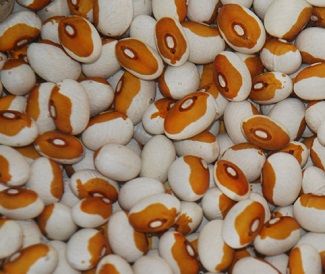Cooking those humble beans hardly seems like it would be a point of contention amongst so many chefs and cooks but that’s exactly what it is! Talk beans and you might as well be talking religion, politics or morality. So what’s the lowdown on cooking dried beans? Well after doing much research on what everyone (and I do mean everyone) has said, here are the basic guidelines for the best, most foolproof way to cook beans that aren’t dry, chalky or too mushy. Oh and for those of you who erroneously think beans are boring, have you seen all the varieties there are? This list barely scratches the surface!
Yes, the soak is Essential
Why? Because certain carbohydrates and compounds are created in dried bean, this is what leads to certain gastrointestinal problems. When you soak the beans, you allow these compounds to break down, yielding a more digestible bean.
To soak: Start with cold, filtered water. Ratio is 5:1 water to beans. Optimum soak time is 6 hours. Go much longer and some of those beans may start to break. Afterward soaking, rinse and start again with fresh, filtered water, ratio 3:1 for cooking. Why filtered? Filtered and even deionized or distilled water may be preferable depending on the mineral content of your tap water. If cooking beans has always been problematic for you, it’s probably the water. Nine-to-fivers, in case a six hour soak sounds basically impossible, try this method the night before you’ll be serving those beans, so you can cook those beans when you get home. FYI—you can leave them soaking in the water in which they were par-boiled, but rinsing afterwards is still important!
Cook in just Water, Slow and Low
Huh? It’s true. Contrary to what most of us have been taught just plain water will do a better job than all the lard and oil in the world. Boiling beans can toughen them, so stick to slow and slow, simmering your beans and adding more filtered water if necessary. Don’t bring them to a boil, just simmer. This will typically increase your cooking time by one-quarter to as much as one-third. If you’re big on aromatic spices like bay, thyme or rosemary, you can add that to the pot at this stage but wait to add garlic, onion or anything else.
¾ Done
Roughly three-quarters through the cooking process is when you want to add the rest of your ingredients. The texture of the beans at this stage should be bitable, or smash-able with a fork but still a little tough and chalky. Bear in mind, what you’re trying to achieve is letting certain flavors permeate the bean’s outer membrane. So if you add oil before acid, those nice, fresh tomatoes from your garden won’t flavor the bean. With that in mind, if you have onions, add those first. You may want to sauté them (diced) in just a tad olive oil, or raw and diced fine is okay too. Cook for another 10-15 minutes, then add any other acidic things you may be using like those aforementioned tomatoes or that bit of canned tomato sauce. After that comes your garlic and additional spices. Then add in your butter, olive oil, bacon or whatever fat or fats you want. DO NOT add any additional salt. Salt is a no-no because it actually inhibits moisture from traveling into the bean and cooking it properly. Yes, tomato sauce, bacon and butter all have some salt but that shouldn’t affect the beans too aversely at this stage in the cooking process.
Cover and Cook
Make sure you’ve got enough pot liquor in the pot. Ideally, you want just about a half an inch of liquid covering the beans. Put the lid on and lower just a tad. Now is the time when all those various flavors combine and season those beans.
Once they’re done, finished beans will be whole, bitable but not mushy. Go ahead, stir and salt to your heart’s content. Add pepper, a little lemon, maybe a tad more olive oil or butter and serve however you like, alongside rice, in a burrito, as a side, whatever. You’ve got really healthy, fat-free or low-fat cooking that’s easy on the pocketbook too!
Enjoy!
**Also, there’s oh so many varieties of beans so much of the world seems to have forgotten about: Christmas Beans, Carolina Greasy Pole, Yellow Eyes (my new favorite), Black Valentine, Cranberry Beans, Painted Ponies, Gold of Macau and the list goes on and on! Want to explore? You could make a different bean once a week and one year later, still have more to try!
Check out few recipe ideas here.





